Petrol Engine Principle and Working Cycle Explained:
What is an Engine?
Before knowing about how the Petrol Engine works, let’s first understand what is an engine. This is common for both petrol and diesel engines alike. An engine is a power generating machine which converts potential energy of the fuel into heat energy and then into motion. It produces power and also runs on its own power.
The engine generates its power by burning the fuel in a self-regulated and controlled ‘Combustion’ process. The combustion process involves many sub-processes which burn the fuel efficiently and results in the smooth running of the engine.
These processes include:
- The suction of air (also known as breathing or aspiration).
- Mixing of the fuel with air after breaking the liquid fuel into highly atomised / mist form.
- Igniting the air-fuel mixture either with a spark (petrol engine) or by self-ignition after raising the temperature of the air by compressing it (diesel engine).
- Burning of highly atomized fuel particles which results in releasing / ejection of heat energy.
How does an Engine work?
The engine converts Heat Energy into Kinetic Energy in the form of ‘Reciprocating Motion’. The expansion of heated gases and their forces act on the engine pistons. The gases push the pistons downwards which results in reciprocating motion of pistons.
This motion of the piston enables the crank-shaft to rotate. Thus, it finally converts the reciprocating motion into the ‘Rotary motion‘ and passes on to wheels.
Operation / Working Principle of Engine:
The conventional internal combustion engine operates on two basic principals which are –
- Otto Cycle &
- Diesel Cycle
What is ‘Otto Cycle’? How Does Petrol Engine work?
Otto Cycle is also known as Four-Stroke Spark-Ignition Cycle. It was named after German engineer Nikolaus Otto who invented, developed and patented first Four-Stroke petrol engine. The Four-Stroke petrol engine works on the following cycle which includes –
1. Suction Stroke – With pistons moving downwards and the opening of the inlet valve creates the suction of air-fuel mixture.

2. Compression Stroke – With the closing of Inlet valve, it closes the area above the piston. The piston moves up resulting in compression of the air-fuel mixture in a confined space.
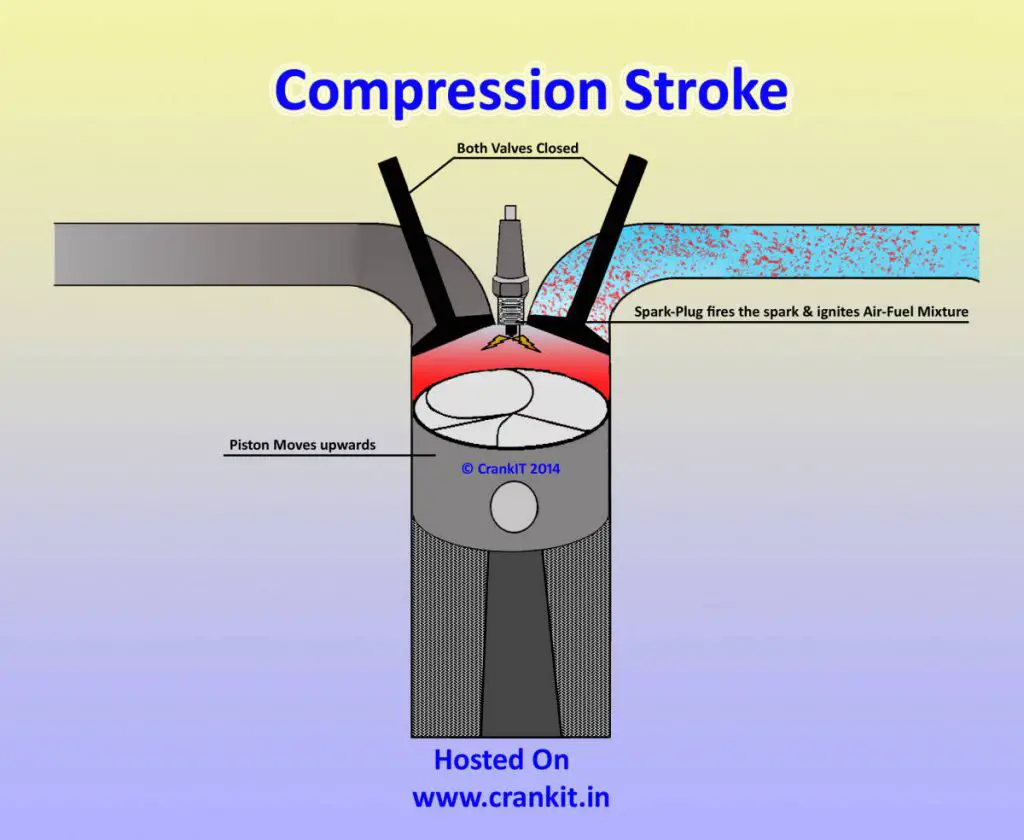
Combustion Process – At this stage, the spark-plug fires the spark which results in instantaneous burning of petrol causing in an explosion. This causes heat to release which generates expanding forces known as power.
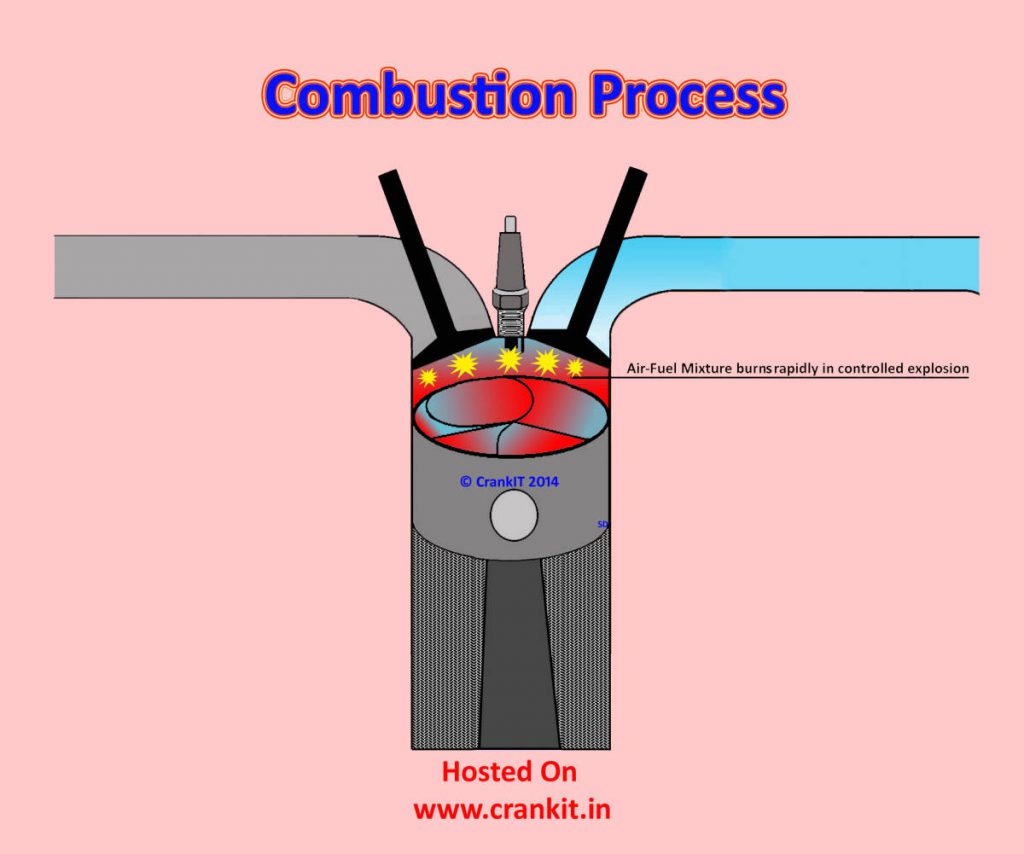
3. Power Stroke – Furthermore, these forces again push the pistons downwards resulting in their reciprocating motion.
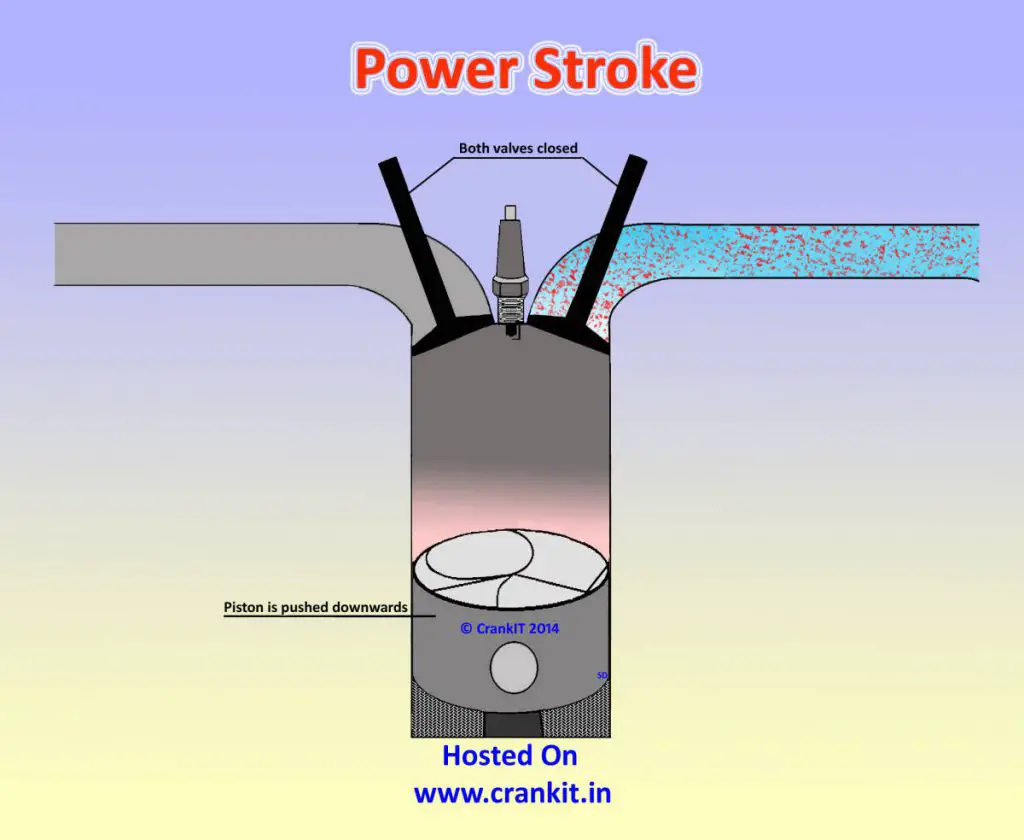
4. Exhaust Stroke – On their way up, the pistons push the exhaust gases above them thru’ the exhaust valve which opens during the exhaust stroke.
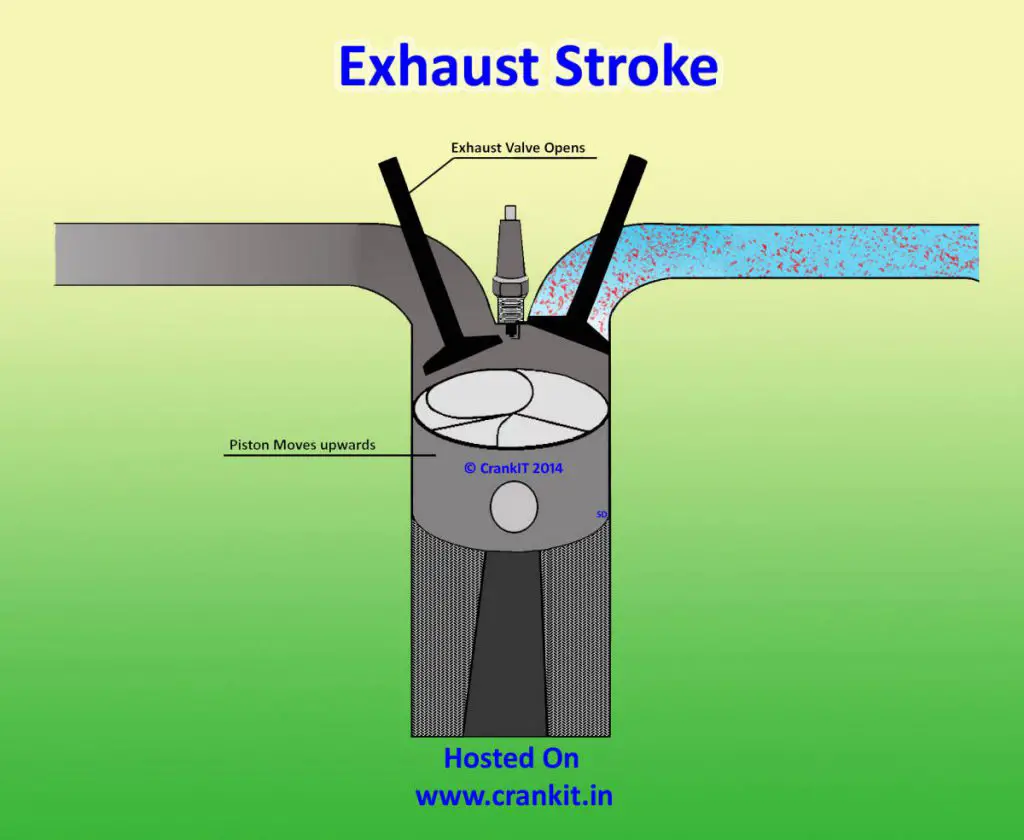
Thus, this cycle repeats itself until the engine is turned off, resulting in the continuance of its running.
Watch 4-Stroke Petrol Engine Working Animation Here:
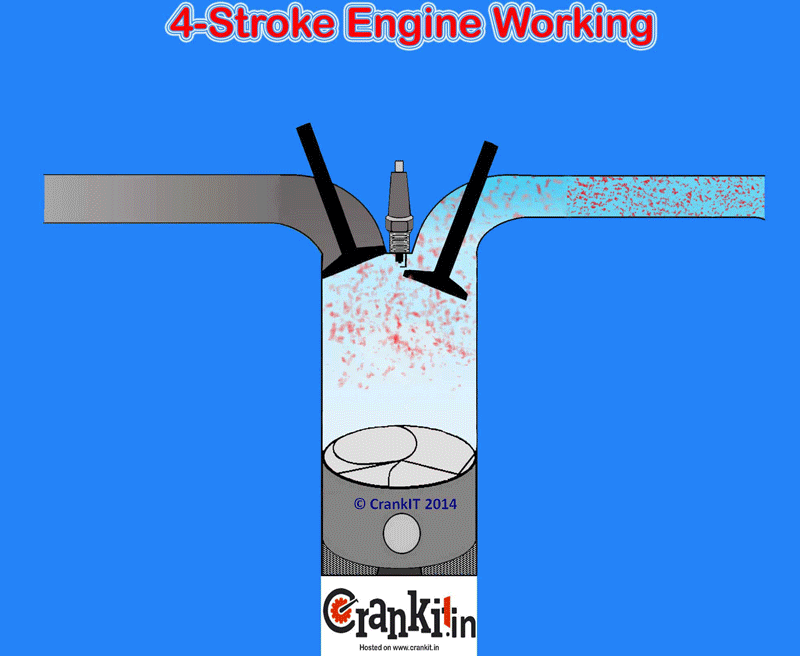
The earlier generation petrol engine used ‘Carburettor‘ to supply petrol to the engine. The newer generation petrol engines use sophisticated ‘Fuel-Injection‘ technology (just like diesel engines) with an ‘Engine Management System‘ for improved performance and lower emissions. However, it still uses the spark-plug for igniting the petrol which was the case in the earlier generation petrol engines.
Keep reading: Diesel engine principle and working explained >>
